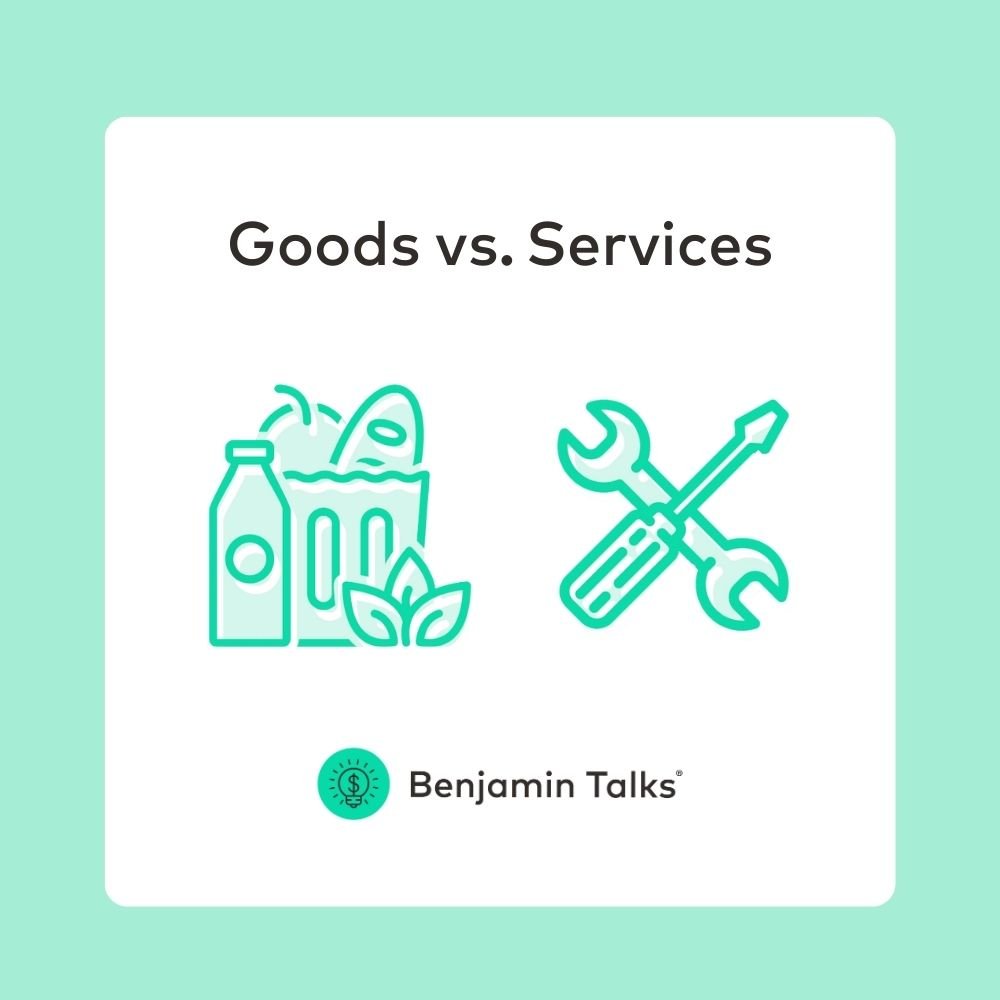How to Explain Goods and Services to Your Child
Financial Literacy Terms to know: Goods and Services
Beyond needs vs. wants, it's essential that kids understand the basics of goods vs. services to build up their financial literacy skills.
Teach your child about goods and services.
A good is a physical item, usually something you can hold in your hand or touch.
A service is an action performed by a person or machine typically to benefit someone.
Goods might be a loaf of bread, a baseball bat or even ten gallons of gasoline to fill up the family car. A service might be a haircut, dance lesson or doctor appointment.
Some goods and services are wants, while others are needs. People need goods like groceries and clothing, and may want goods like a Lego set, new basketball or pink headband. People need services offered by plumbers, doctors and teachers, and may want services like swim lessons, house cleaning or dog walking. Importantly, nearly all goods and services require some form of payment.
Who pays for goods and services?
It’s important for kids to understand who pays for most services. Some services offered by doctors, dentists or speech therapists might be paid by insurance. Other services provided by garbage collectors, bus drivers and public school teachers are paid for by taxes. Still others, like car washes, dog grooming or manicures are paid directly by consumers.
Talk to Your Kids About it
A family outing to a local restaurant offers an ideal backdrop for a simple conversation about goods vs. services, as both are provided when eating out. Kids can identify the goods they are consuming (i.e. chicken fingers & french fries, lemonade and vanilla ice cream!), as well as the services they are enjoying (i.e. food cooked by the chef, dinner delivered by a waiter, table cleaned by bus boy, etc).
Bonus points? Parents can ask their kiddos if they think eating at a restaurant is a need or a want.
If children can understand the basics of needs vs. wants and goods vs. services, they are flexing those financial literacy skills from the earliest ages. A solid understanding of these basic concepts will help them make better informed financial decisions as they grow.

